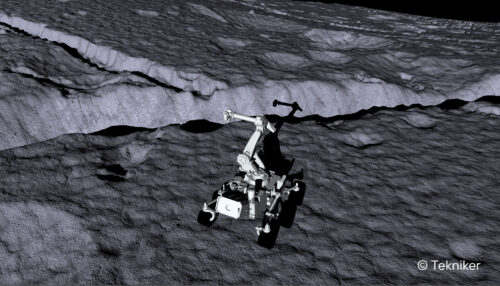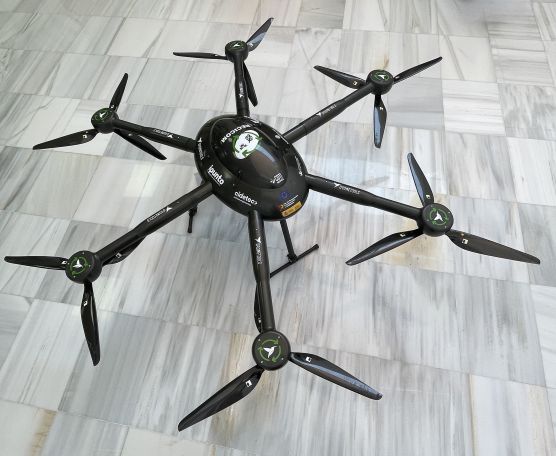A TECHNOLOGICAL BOOST FROM THE BASQUE COUNTRY FOR THE INTERNATIONAL SPACE RACE

Tekniker is leading the Hiperion project to develop new space technologies and research actions focused on improving future planetary missions and meeting their scientific needs
 Collaborative actions involving international agencies such as the European Space Agency, NASA or the Japanese Agency of Aerospace Exploration (JAXA) provide one of the bases upholding the current space race whose main pillars are focused on carrying out human and robotic explorations on the moon and Mars in addition to scientific research missions.
Collaborative actions involving international agencies such as the European Space Agency, NASA or the Japanese Agency of Aerospace Exploration (JAXA) provide one of the bases upholding the current space race whose main pillars are focused on carrying out human and robotic explorations on the moon and Mars in addition to scientific research missions.
An example of this can be found in the partnership established by NASA within the framework of the Artemis programme that will allow astronauts (including the first women ever) to travel to the moon as well as design and develop the Mars Sample Return (MSR) mission for the purpose of bringing samples from the surface of Mars back to our planet.
It is within this context that the Hiperion proyect, under the leadership of the Tekniker technology centre, a member of Basque Research and Technology Alliance (BRTA), is geared towards reinforcing R&D actions carried out by Basque companies associated with the space industry by bringing together the knowledge and expertise of some of the main driving forces of the Basque industry to develop new technologies and techniques that will meet the scientific and technological needs of future planetary missions.
Structures and complex instrumentation
Borja Pozo, the coordinator for the space sector at Tekniker, says that “our work will mainly focus on generating and transferring the new space technologies required by ESA’s technological plan and by the companies related to this sector located in the Basque Country”.
More specifically, Tekniker, an organisation with an extensive amount of experience in the area of technological developments, will make available its capabilities in areas such as additive manufacturing, materials and components, electronics and control, metrology, robotics, complex instrumentation and structures in order to design a range of solutions that will allow companies based in the Basque Country to reinforce their position in the international market so they can address the space race properly.
It will also be possible, moreover, to export any cutting-edge technologies developed within the framework of this project to a number of sectors (medical, industrial, energy, automotive, etc.), to reinforce R&D actions in the Basque Country and improve the competitiveness of its companies
The Tekniker researcher also says that “space science and technology are characterised by very demanding requirements in terms of reliability and low weight in extreme environments. This poses significant engineering challenges which, once properly addressed, allow for the implementation of these technological solutions in our everyday applications and many other markets, a fact that reinforces technological competitiveness”.
Planetary and lunar exploratory missions
As regards the actions programmed by the consortium of industrial stakeholders, mention must be of research activities focused on an instrument to be used in the future aboard a joint NASA and ESA space mission to the so-called Ice Giant planets (Uranus and Neptune) where icy environments can be found.
The expert also states that “our mission at Tekniker is focused on the adaptative optics of an instrument that will be used to measure the chemical composition and temperatures on both planets. Consequently, we are employing coated lenses that will act as multi-spectral filters to no longer use mechanisms and reduce the possibility of failures”.
The technology centre is also developing a smart and adaptable thermal control system based on flexible electronics to monitor temperatures aboard spaceships as well as low magnetic footprint mechanisms to be potentially used during the LISA scientific mission for the observation of gravitational waves in outer space and a study addressing optical interplanetary communications between the Earth and Mars via laser.
Antistatic coatings used to combat lunar dust
Tekniker has also made available to project Hiperion its knowledge associated with multifunctional surfaces to study antistatic coatings used to combat lunar dust in Moon explorations. The technology centre, moreover, has addressed the challenge of using robotics for in-space assemblage and has simulated the construction of structures aboard this satellite taking into account its environmental and gravitational conditions.
Another line of research has focused on analysing planetary atmospheres by using the VIS/NIR spectroscopy technique to improve current planetary observation instruments.
Under the leadership of Tekniker and ending in December 2022, Hiperion is the first project under the umbrella of the Elkartek programme sponsored by the Basque Government that is fully dedicated to outer space. Other centres, universities and a consortium featuring an advisory committee made of several companies operating in the sector are also involved in this project.




